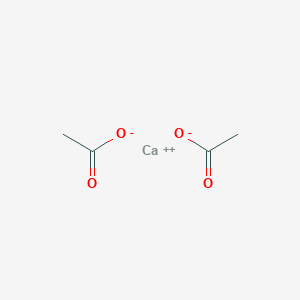Hyperphosphataemia
Adult: Control of hyperphosphataemia in ESRD: Initially, 4-8 g (1-2 g Ca) daily in divided doses, adjusted according to serum phosphate concentrations. Max: 12 g (3 g Ca) daily.
|
Indications and Dosage
Oral
Hyperphosphataemia Adult: Control of hyperphosphataemia in ESRD: Initially, 4-8 g (1-2 g Ca) daily in divided doses, adjusted according to serum phosphate concentrations. Max: 12 g (3 g Ca) daily.
|
|
Administration
Should be taken with food.
|
|
Contraindications
Hypercalcaemia, renal calculi.
|
|
Special Precautions
Patient with hypercalcaemia-associated diseases (e.g. sarcoidosis, and other malignancies); risk factors for cardiac arrhythmias, hypoparathyroid disease. Renal impairment. Pregnancy.
|
|
Adverse Reactions
Significant: Hypercalcaemia, constipation, bloating and gas.
Gastrointestinal disorders: Nausea, vomiting. |
|
Monitoring Parameters
Monitor serum Ca (twice weekly during initial dose adjustments); serum phosphorus; serum Ca-phosphorus product; intact parathyroid hormone.
|
|
Drug Interactions
Increased risk of cardiac arrhythmias with digitalis, verapamil, gallopamil in the presence of hypercalcaemia. May decrease the bioavailability of fluoroquinolones (e.g. ciprofloxacin), and tetracyclines (e.g. doxycycline).
|
|
Action
Description:
Mechanism of Action: Ca acetate sequesters phosphate in the small intestine to form insoluble calcium phosphate, which is excreted in the faeces, thereby reducing phosphate absorption in the gut and preventing the development of renal osteodystrophy in chronic renal failure. Pharmacokinetics: Absorption: Primarily absorbed from the small intestine via active transport and passive diffusion, vitamin D enhances absorption. Distribution: Crosses the placenta and enters the breast milk. Excretion: Mainly via faeces (as insoluble calcium salts); urine (20%). |
|
Chemical Structure
 Source: National Center for Biotechnology Information. PubChem Database. Calcium acetate, CID=6116, https://pubchem.ncbi.nlm.nih.gov/compound/Calcium-acetate (accessed on May 26, 2020) |
|
Storage
Store between 20-25°C.
|
|
MIMS Class
|
|
ATC Classification
V03AE07 - calcium acetate ; Belongs to the class of drugs used in the treatment of hyperkalemia and hyperphosphatemia.
|
|
References
Anon. Calcium Acetate. Lexicomp Online. Hudson, Ohio. Wolters Kluwer Clinical Drug Information, Inc. https://online.lexi.com. Accessed 06/05/2020. Anon. Calcium Salts. AHFS Clinical Drug Information [online]. Bethesda, MD. American Society of Health-System Pharmacists, Inc. https://www.ahfscdi.com. Accessed 06/05/2020. Buckingham R (ed). Calcium. Martindale: The Complete Drug Reference [online]. London. Pharmaceutical Press. https://www.medicinescomplete.com. Accessed 06/05/2020. Calcium Acetate Capsule (Amneal Pharmaceuticals LLC). DailyMed. Source: U.S. National Library of Medicine. https://dailymed.nlm.nih.gov/dailymed/. Accessed 06/05/2020. Joint Formulary Committee. Calcium Acetate. British National Formulary [online]. London. BMJ Group and Pharmaceutical Press. https://www.medicinescomplete.com. Accessed 06/05/2020. Phosex 1,000 mg Tablet (Pharmacosmos A/S). MHRA. https://products.mhra.gov.uk/. Accessed 06/05/2020.
|